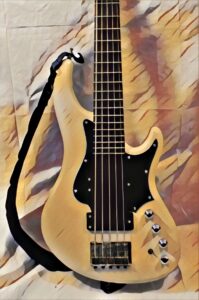On Learning and Practice
A measured approach
I would like to share with you my approach to learning and practice that I have formulated through my years of study and teaching. I am not suggesting this is either right or a perfect method for each of you. However, this could serve as a starting point for any investigations you make into achieving forward movement with your performance, both in the practice room and on the stage.
How to approach it…
To develop a solid practice for almost any physical activity I feel one should cultivate the following –
Determination – the desire and will to consistently practice / perform to the highest level possible, even in the face of great challenges.
Focus – the ability to hone in on a particular task / topic / problem.
Commitment – To maintain the work on a given area over a period of time until you achieve your aims / have solved any problems.
Patience – to keep going back again and again until you are done and not falter from your path due to boredom or frustration or failure.
Let’s look at one of the methods I personally employ and teach to my students:
Get it right, Not Fast!!
When approaching a new piece of music, the process if two-fold – ‘learning‘ then ‘practice’.
Learning
The ‘Learning’ element if this process should be engaged with slowly with the primary focus being on getting the right notes or chords in the right order. Once these are memorised, take each phrase and again, slowly and, if necessary out of ‘time’ but with a focus on how each phrases frenetically works (ie. 1 & 2 & 3 e & 4), work on each phrase.
As the notes and rhythmic elements of each phrase or chord voicing come together and become more familiar, so you learn how to ‘instruct’ your fingers to execute the movement more fluently.
I have found that singing the line often enables me to then perform it more quickly on my instrument, using the correct notes and rhythmic phrasing.
A story relayed by the great jazz educator Hal Galper talks of a student who approaches Dizzy Gillespie after a high school concert and asks what he is thinking when he is playing. His answer was “…most people think I’m thinking something like (sings quietly) ‘dab bab dooby do daaa’ but actually I’m thinking (sings, but shouting) ‘DAB BAB DOOBY DO DAAA’. In other words, in order to deliver a phrase or melody convincingly and with meaning, it is first necessary for the line to be vivid enough or loud in the brain. Part of your learning process should involve being able to internally sing/hear the music you’re studying loud to strengthen the brain signal.
Practice
Once the process of learning all the harmonic and rhythmic elements (taking the music ‘off the page’ when possible) is complete, it is time to begin practicing, either the piece as a whole or any of the more challenging phrases. This part of the process is about precision and meticulous attention to detail. Fine tuning the performance to express precisely your intended emotional and sonic content. This will be determined either by your own inner voice or your voice on the instrument, or by aiming to perfectly emulate the player whom you have transcribed.
A common misconception about practice is that you engaged with it from the very start of the learning process and that, once the piece has been successfully played through a handful of times, it has been conquered. On the contrary, this is when the work really begins.
So when you’re next in the practice room and you’ve finished the first few run-throughs of a song, got it kind-of half right on the way and you’re about to move on, stop! Make an honest assessment of your performance. Then, take any parts where an improvement can be made, breaking them down to smaller chunks or phrases and work on each part until it becomes a true representation of the piece. By doing this you not only inform your performance of that particular song, you create a foundation of facility and habit. Both of which will go with you to the next tune, and the next and the next and so on, perpetually reinforcing your ability on your instrument.
Further Reading
Having spent many years researching how one learns and excels, I would like to share some of the sources that have informed and guided my thinking.
‘Outliers’ & ‘Blink’ – Malcom Gladwell
Mindset – Carol S. Dweck
Effortless Mastery – Kenny Werner
Coach Wooden’s Pyramid of Success – John Wooden, Jay Carty & David Robinson
The Cambridge Handbook of Expertise and Expert performance, Chapter 38: The Influence of Experience and Deliberate Practice on the Development of Superior Expert Performance – K. Anders Ericsson
In addition, I have watched hours of lectures from great educators such as Hal Galper and Kenny Werner; studied for a number of years with Joe Hubbard and Steve Lawson, both of whom challenged me to think about my approach to studying in different ways; and attended masterclasses and had one-off lessons with some inspirational musicians. All these have informed my opinion and as I discover more, so I further evolve my thinking, teaching and personal practice.
